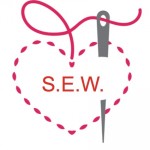
Do you want to know how to truly influence those around you? How to move out of control battles and find ways for everyone to get everything they want? There really is a way to do this–and it will take you right into that magic river of flow.
Let’s do an experiment. Imagine that I’ve got my hand out, with fingers up and palm facing you. As you visualize putting your hand up against mine, now feel me push against you.
What do you do?
When I do this in workshops or with folks I work with in my office, the results are 100% the same. If I push, you push back.
This is instinctive. There’s no thought behind it. What I’ve witnessed is that no one—from babies who are old enough to interact on through every age thereafter—wants to be controlled. If we’re pushed, we resist.
Consider that for a moment. Imagine that push/resist action and feel how much energy is wasted right then and there. It’s the opposite of flow, really; it’s putting energy out and having it stopped in its tracks. It’s where frustration begins, as we start an action and are thwarted.
I hear people accusing others of being “control freaks.” Well, I think every single one of us is a control freak. A sense of control is a factor in our happiness and wellbeing, as it provides us with at least the illusion of safety and security. So we each have our own version of being controlling. It might look direct and dominating (“Stop that!”) or it might be more indirect.
See if you can pick your favorite ways to control others from this list:
Wheedling, cajoling, stonewalling, going limp, getting dramatic, using the silent treatment, whining, distancing, being “helpful,” giving advice, playing the victim, “forgetting,” accusing,arguing, trying to cheer someone up, name calling, fixing, criticizing, obsessing, worrying, being right, giving up, reassuring, placating, concealing, avoiding, foot dragging, blaming, threatening, using statistics, one-upping, abruptly leaving, exploding, ridiculing, manipulating, having a tantrum, pontificating, sarcasm, insistence on being right, being the reasonable one.
What did I miss?
We all do it. If we don’t have direct power, every one of us has indirect strategies. Even those who have the least power or control over their lives—prisoners, children, teenagers—will find a way to resist. Ask any parent about what happens when they try to push their kids to hurry up or do something they don’t want to, and you will hear about the dynamics of control. You’ll see how “Power Over” looks like a person has control over another, but then how “Power Under” will be right there, messing up the flow through eventual resistance.
This is the issue in intimate relationships. When “something happens” and one or both people go into Reactive Brain, they instinctively try to regain control through one or a series of the strategies from above. Since neither wants to give up control, power struggles can escalate and take root, eventually even becoming the ongoing interchanges of a relationship. The bottom line of these struggles: Each person wants to get what they want. And from the standpoint of Reactive Brain, one person will get what they want, while the other will have to accede their wishes.
Here’s what control looks like
I’ll illustrate this with my favorite non-gendered couple, Chris and Pat). While you read this, note each person’s control maneuvers:
Chris: We got the credit card bill. We really need to talk about money. (Directly controlling)
Pat: I’m in the middle of something. Let’s talk later. (Avoiding and resisting)
Chris: That’s what you say every time. We have to deal with this. (Directly controlling)
Pat: Why does it always have to be your way?! (Whining and accusing)
Chris: Someone’s got to be responsible. (Criticizing)
Pat: Oh, great, here we go… (Foot dragging, using sarcasm)
Chris: Look, I’m sick of being the bad guy here! (Escalating, playing the victim)
Pat: Well, if the shoe fits… (Indirect attack)
Chris: I need space. I can’t stand this! (Threatening)
Pat: Fine! Go ahead! Leave me, just like everyone else! (Playing the victim, getting dramatic)
Chris: Oh, God, I am SO TIRED OF THIS! I’m going out for a beer with my friends. At least I have fun with them. (Playing the victim, avoiding)
Does that sounds familiar?
There’s an alternative to controlling others (or resisting control)
The art of relationship is about shifting away from trying to gain control and replacing that with using what allows for connection and satisfaction of each person’s needs: Influence.
Humans are very well designed to influence each other. All of our physiological systems—circulation, nervous, respiratory, etc.—are closed loops, running their complex processes within our single body, between us and us. The exception to this rule is our emotional, limbic brain. Within our brain design, structures like mirror neurons and facial expressions make emotions highly contagious, and so, apt to influence others. Whatever is happening with my voice tone, breath rate, facial muscles, and posture will immediately light up your brain so that you can experience a pretty good facsimile of what’s going on in my inner world. This is how empathy works, and it’s a highly effective way of understanding another’s perspective. It works so well, in fact, that sometimes our limbic linkage can seem like a burden (“I felt fine until you came home all moody,” or “Will you please relax?? You’re making me feel really tense” or “I wish you would leave me alone while I feel crappy—your sunshine and rainbows attitude is really annoying.”)
Shifting out of control and into influence allows you to stop creating resistance and struggle with the other, and to start creating connection and ease in your decision-making. You’re maximizing what works best and avoiding roadblocks. Here’s how it works:
Influence begins with a focus on describing sensations.
(You can find more about this process in my blog called “What you’re feeling is between you and you.”). If you tell me your mouth is dry or your shoulders are tight, I’ll immediately conjure up my own version of those sensations. Now I’m tuned into you. Then if you link up your sensations with emotions (like shoulder tension might be anger, or a dry mouth, fear) I’m really with you. There’s nothing for me to resist because it’s all about you. I’m open to hear what’s going on for you; your physiology is having an effect on me.
If you actually are feeling emotions, I can just hang out until you’re done (so long as I remember to not try to control you by trying to “fix” the situation). And once the emotions have moved through, there is open space for you to tune into what you really want. Then I can do the same thing: describe my sensations, link those with emotions, and finally get down to discovering what I really want. Since we’ll both be in Creative Brain by then, we’ll be able to generate solutions wherein we can both get what we want.
Easy, right? Well, I know, it takes practice. Here’s what it could sound like for our pals.
Chris: We got the credit card bill today. My stomach has been in a knot ever since.
Pat: Oh–?
Chris: Yeah, I’ve felt scared all day.
Pat: Hmmmm. Tell me more.
Chris: Well, let’s see. While I’m feeling afraid, I’m having images—of my parents fighting about money, oh, and my old favorite—that one of ending up homeless.
Pat: Wow, I see how scared you are. As you’re talking about this, I notice my jaw is tight. I feel angry.
Chris: Oh…
Pat: I think my anger is about not wanting to deal with this.
A few minutes later, after Chris and Pat did some deep breathing and moved around and felt their fear and anger:
Chris: OK, that’s better.
Pat: Yeah, I feel much more here now. I’m ready to talk about this.
Chris: Oh, good! My stomach feels much better. Now I know what I want—I want to step back, dream about our long-term goals. Maybe make some new agreements about money, I’m not sure.
Pat: Well, I want to get really creative, come up with some new ideas.
Chris: That sounds fun! Want to go for a walk and dream?
Pat: Absolutely!
Using influence instead of control to work out issues allows for connection and creativity. It takes people out of the competitiveness and win/lose of Reactive Brain, and shifts the whole experience into flow, collaboration, and deepened intimacy. Instead of the energy-drain of push/resist, there is energy generation that comes from mutual understanding, empathy, and co-creativity.
I’d love to hear your experiences in experimenting with this new strategy.
You can find more tools, subscribe to my blogs and newsletters, and see what upcoming workshops and presentations I have at www.juliacolwell.com.















